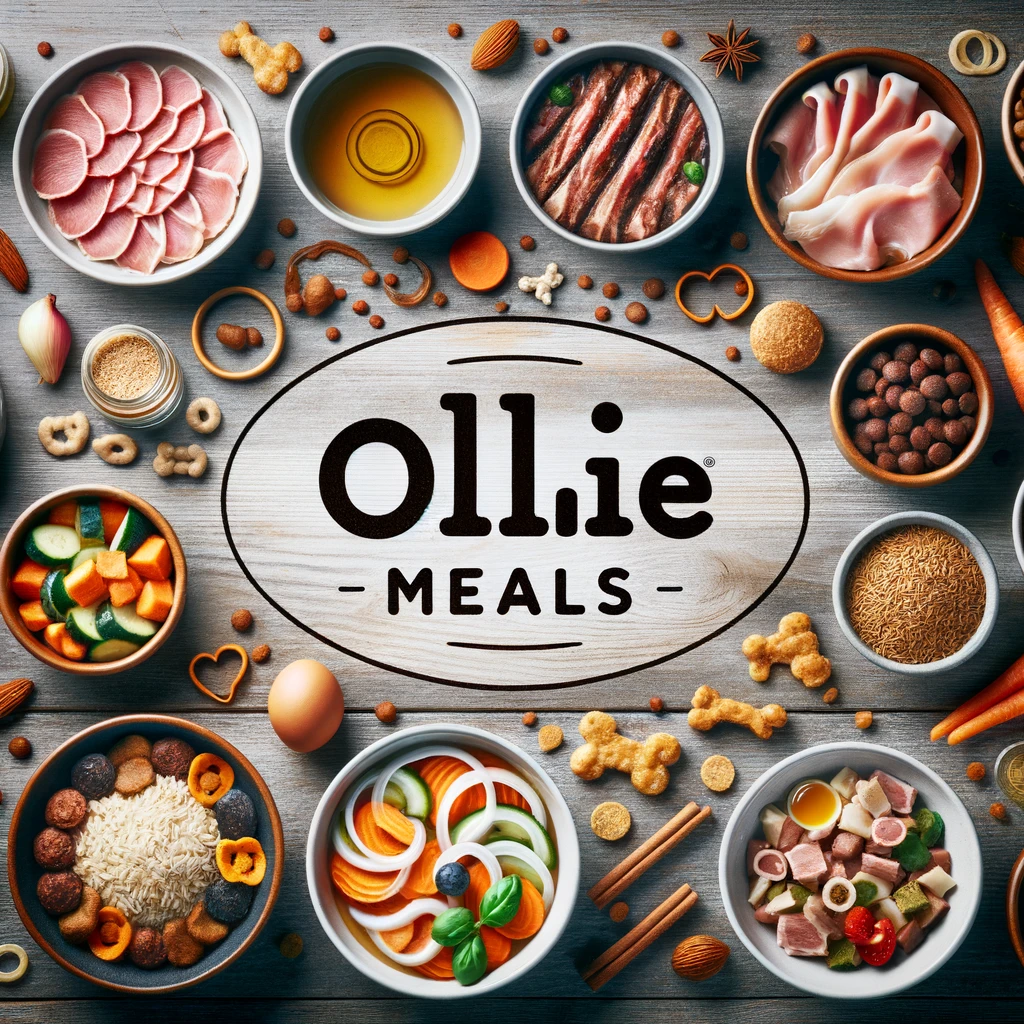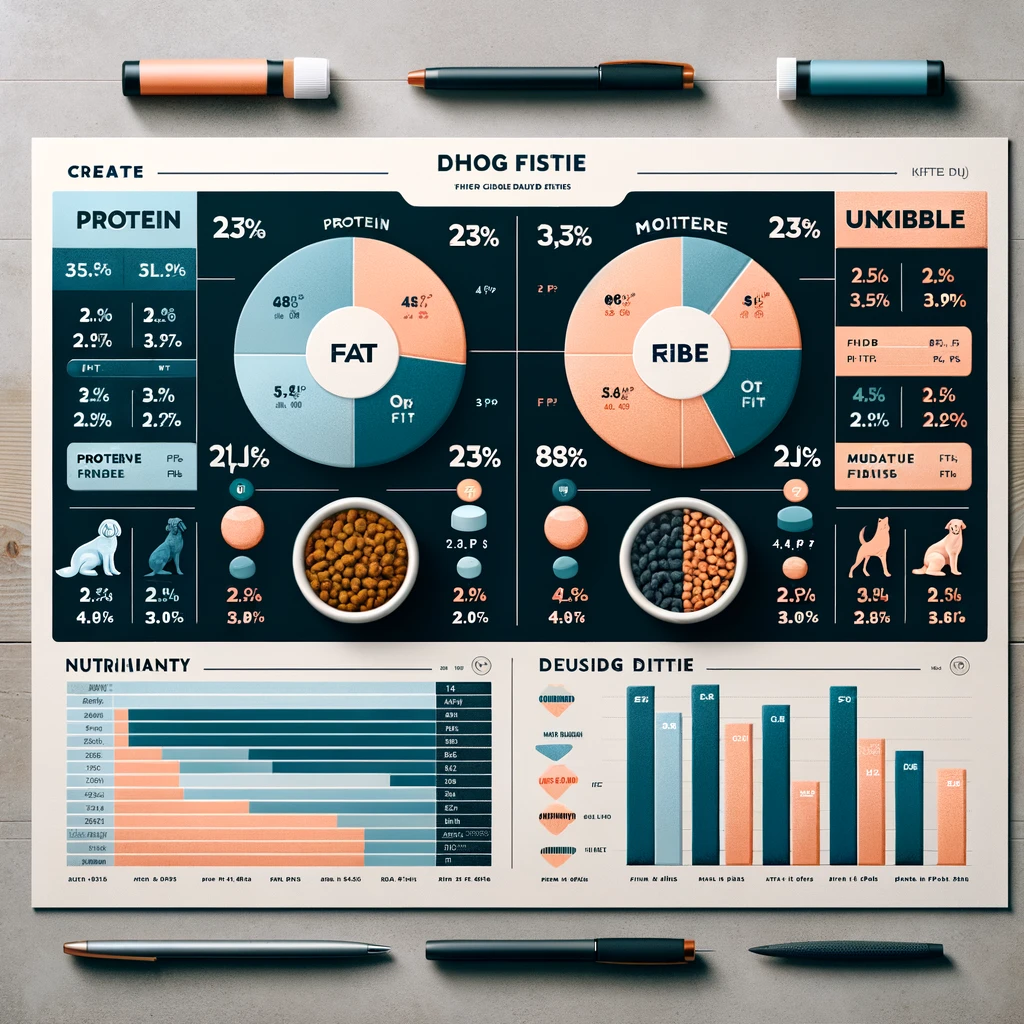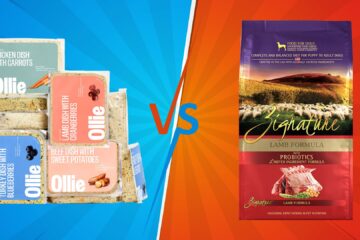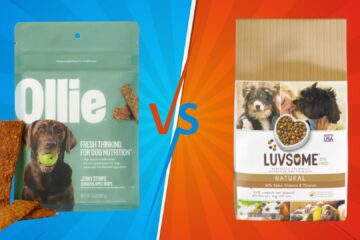As the demand for very high-quality dog food rises, pet owners often find themselves comparing top brands to choose the best for their furry friends.
This comprehensive review delves into the specifics of Ollie vs. Unkibble dog food, from ingredient quality and customization options to pricing and customer reviews.
Overview of Ollie Dog Food
Founded with the mission to provide healthier food for dogs, Ollie has quickly established itself as a top contender in the dog food market. Ollie prides itself on using human-grade, whole-food ingredients.
Think fresh veggies, premium meats, and a splash of love. Each recipe is like a five-star meal, minus the fancy tablecloth.

Ollie’s menu is like a doggy buffet – options ranging from beef and chicken to turkey and lamb. It’s a carnivore’s dream, with a side of fruits and veggies for that health kick.
Overview of Unkibble Dog Food
Unkibble stands out with its unique approach to dog food. They offer what they call ‘Unkibble’ – a blend of dry food that doesn’t compromise quality. They’re all about customized dry food, but with a twist. Fresh, whole ingredients that are gently dried to retain nutrition and flavor.

Unkibble’s recipes are like a hidden treasure trove of goodness. You’ve got your choice of beef, chicken, or fish, mixed with wholesome grains and garden-fresh produce.
Nutritional Comparison
When comparing Ollie and Unkibble, it’s crucial to look at their nutritional content. Both brands boast high-quality ingredients, but their nutritional profiles differ slightly due to their distinct food forms. A closer look at the nutritional content reveals key differences between Ollie and Unkibble that can influence a pet owner’s decision.

Protein Content: Ollie generally has a higher protein percentage due to its fresh meat ingredients, whereas Unkibble, though high in protein, might have slightly less due to its dry form. Ollie often utilizes whole, fresh meats like chicken, beef, and turkey as primary protein sources, contributing to a higher biological value. Unkibble, while also focusing on quality protein sources, might include dehydrated meats which are excellent for dry food but may have a slightly lower digestibility factor.
| Brand | Protein source | Benefits |
| Ollie | Whole, fresh meats | Higher digestibility and nutrient availability |
| Unkibble | Dehydrated meats | Concentrated protein source, ideal for dry food |
Fats and Oils: Both brands incorporate healthy fats and oils, essential for a dog’s diet. Ollie uses a mix of animal fats and plant-based oils, rich in omega-3 and omega-6 fatty acids, supporting coat and skin health. Unkibble also includes essential fats, though the balance and sources might vary slightly to complement its dry food formulation.
Carbohydrates: The carbohydrate sources in both brands are chosen for their nutritional value and digestibility. Ollie includes whole vegetables and grains, while Unkibble might use a blend of grains and legumes, optimized for a dry food format, ensuring sustained energy release.
Vitamins and Minerals: Both brands enrich their formulas with vitamins and minerals to meet a dog’s nutritional needs. However, the method of incorporation can differ, with Ollie possibly using more fresh fruits and vegetables as natural sources, while Unkibble might rely on a mix of natural sources and supplements to ensure nutrient completeness in their dry food format.
Ingredient Quality and Sources
A critical aspect of any dog food is the quality and source of its ingredients. Ollie prides itself on sourcing human-grade ingredients, while Unkibble focuses on high-quality dry ingredients. Delving deeper into the quality and sources of ingredients highlights the commitment of both brands to superior dog nutrition.
Ollie:
Meat: Sourced from USDA-regulated facilities, ensuring high-quality, human-grade meat.
Vegetables and Fruits: Locally sourced, providing freshness and nutritional integrity.
Grains (if used): Whole and unprocessed, offering essential fibers and nutrients.
Unkibble:
Meat: Uses high-quality, dehydrated meats to preserve nutritional content in a dry format.
Vegetables and Fruits: Carefully selected for their nutritional value and compatibility with the dry food process.
Grains and Legumes: Chosen for their nutritional content and ability to maintain form and provide energy in a kibble format.
Product Variety and Customization
Both Ollie and Unkibble offer a range of products designed to meet the diverse needs of dogs, but their approaches to variety and customization highlight their unique strengths.
Ollie:
Ollie takes pride in its ability to offer personalized meal plans that are tailored to the specific needs of each dog. This customization considers factors such as age, breed, weight, and any special health requirements like allergies or sensitivities.
- Customization Process: Upon signing up, pet owners complete a detailed profile for their dog. Ollie then uses this information to create a custom meal plan, suggesting specific recipes and portion sizes.
- Recipe Variety: Ollie provides a selection of recipes featuring different protein sources such as chicken, beef, lamb, and turkey, each formulated with a vet’s input to ensure nutritional completeness.
Unkibble:
Unkibble, while less customizable in terms of individual dietary needs, offers a straightforward approach to variety with its range of high-quality dry food options.
- Flavor Options: Unkibble offers several flavor options, including chicken, beef, and fish, catering to different taste preferences.
- Consistent Quality: Despite the broader approach, each formula is crafted with careful consideration of nutritional balance, ensuring every meal is complete and balanced.
Packaging and Sustainability
The environmental impact of pet food packaging is a growing concern for many pet owners. Ollie and Unkibble have taken steps to address sustainability in their packaging choices.

Ollie:
Ollie uses eco-friendly packaging materials where possible, including recyclable and compostable boxes. Their refrigerated meals are packed in insulated boxes designed to keep the food fresh during delivery. They also encourage customers to recycle the packaging, providing instructions for recycling or composting their materials.
Unkibble:
Unkibble focuses on minimizing waste with its packaging design, using recyclable bags that are efficient and reduce the overall environmental footprint. By optimizing the size and design of its packaging, Unkibble aims to reduce waste and energy consumption during shipping.
Cost Analysis: Is Ollie or Unkibble More Economical?
When considering the cost, it’s essential to evaluate not just the price tag but the value offered by each brand in terms of nutritional content, ingredient quality, and the overall health benefits for your dog.
In both cases, the brands offer trial periods and subscription models that can offer additional savings and convenience.
Ollie:
Given its use of fresh, high-quality ingredients and customized meal plans, Ollie sits at a higher price point. However, for many pet owners, the benefits of a tailored, fresh diet justify the investment. Prices can vary based on the size of the dog and the frequency of deliveries, but on average, a medium-sized dog might cost around $5-6 per day to feed with Ollie.
Unkibble:
Unkibble offers a more affordable option while still focusing on quality. Its pricing model is designed to provide value, making it an attractive choice for dog owners looking for a balance between cost and quality. The average cost for feeding a medium-sized dog with Unkibble might range from $2-3 per day.
Customer Experiences and Reviews
Customer feedback is invaluable for understanding the real-world impact of choosing between Ollie and Unkibble. Customer feedback for both brands is predominantly positive. Ollie’s users often cite improved health and vitality in their dogs, while Unkibble’s customers appreciate the convenience and quality of the product.
Ollie:
Customers often praise Ollie for the visible health benefits they observe in their pets, including improved coat shine, energy levels, and digestive health. The personalized service and attention to detail in meal planning also receive high marks.
Unkibble:
Unkibble users appreciate the convenience and quality of the food, noting improvements in their dog’s enjoyment of mealtime and overall health. The ease of storage and longer shelf life compared to fresh food options is also a plus for many.
Feeding and Storage Guidelines
Ollie requires refrigeration and has a shorter shelf life, while Unkibble can be stored like traditional dry dog food, offering greater convenience for storage.
Proper feeding and storage are crucial for maintaining the freshness and nutritional value of dog food. Ollie and Unkibble offer guidelines to help pet owners.
Ollie:
- Feeding Guidelines: Ollie provides detailed instructions based on the custom meal plan, including the exact portion sizes for each meal.
- Storage: Refrigeration is required for Ollie’s meals, with a shelf life of 4-6 weeks in the freezer and 4-5 days in the refrigerator once thawed.
Unkibble:
- Feeding Guidelines: Feeding instructions are provided based on the dog’s weight, with recommendations for adjusting based on activity level and age.
- Storage: Unkibble can be stored in a cool, dry place, with its bags designed to reseal for freshness. The shelf life is significantly longer than fresh or refrigerated options, making it a convenient choice for many.
Pros and Cons
Ollie
Pros: Higher protein content, fresh human-grade ingredients and personalized meal plans
Cons: More expensive, requires refrigeration
Unkibble
Pros: Convenient storage, cost-effective and high-quality dry food
Cons: Less protein compared to fresh food and limited customization
Final Verdict
In the Ollie vs Unkibble comparison, the choice largely depends on your priorities. If you prioritize fresh, human-grade ingredients and are willing to pay a higher price, Ollie might be the better option. However, if you prefer the convenience and cost-effectiveness of dry food without compromising on quality, Unkibble could be the way to go.
Read also:


